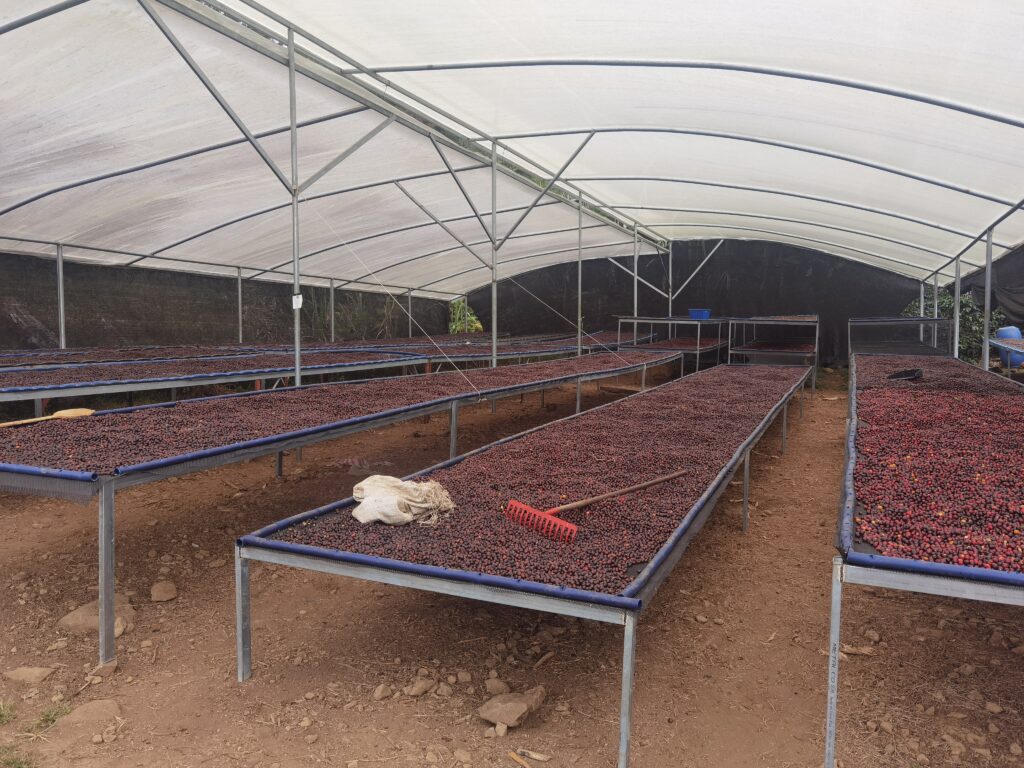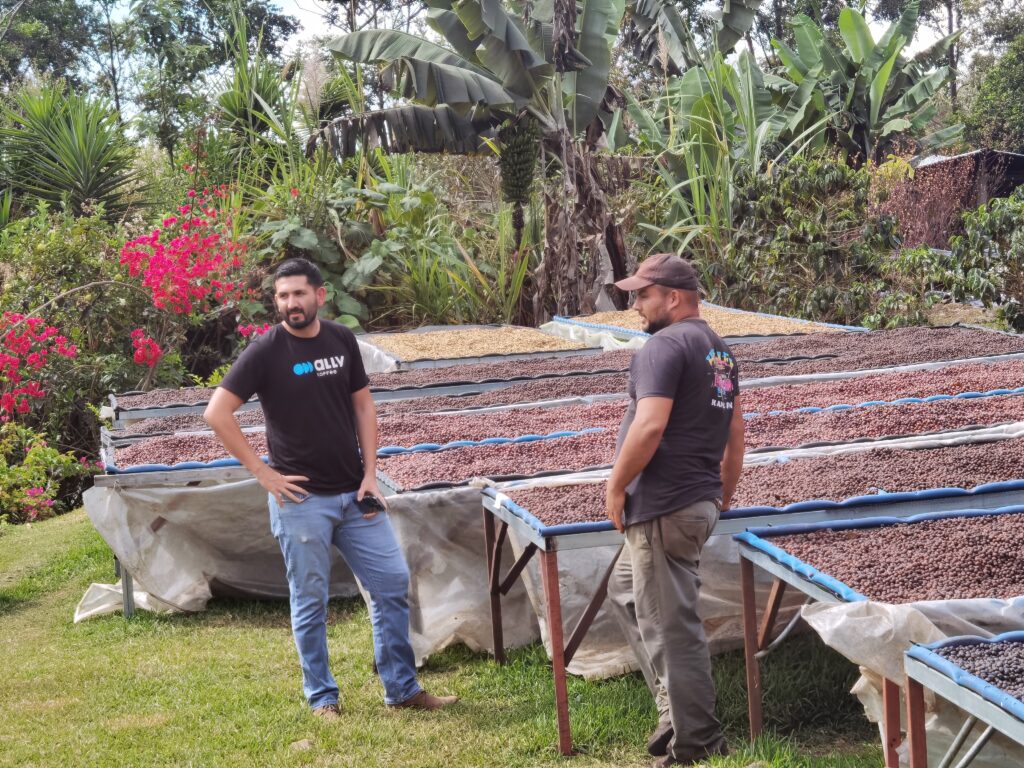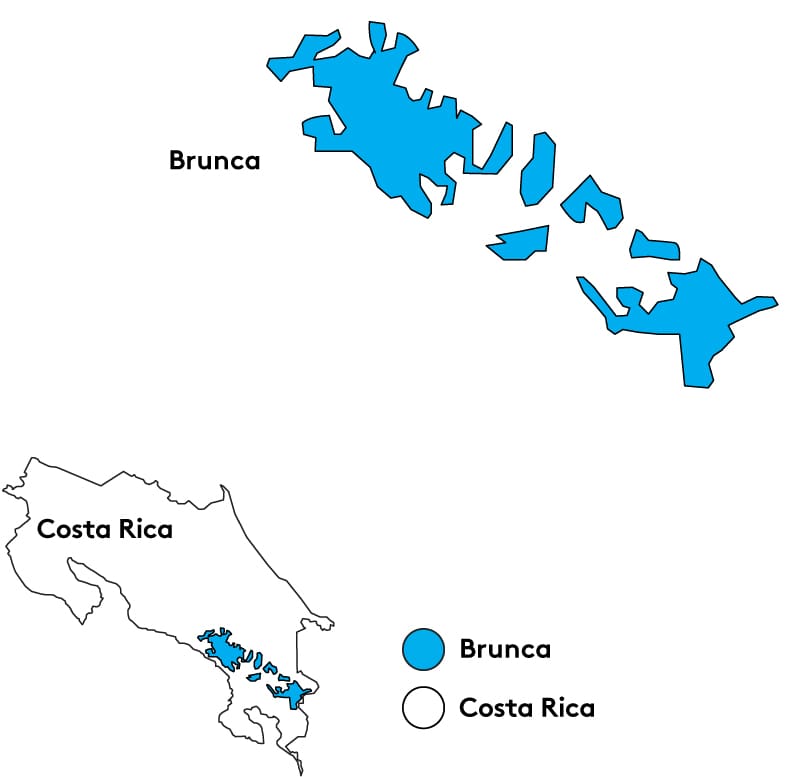Don Senel Micromill was founded by Senel Campos in 2014 as a response to poor coffee prices at the time. In his first year, Don Senel processed 300 kg of coffee from Finca La Toboba, fitting a motor from a washing machine to an old hand pulper and using the basic infrastructure already in place at the mill. This first lot scored well, and during the next harvest Senel would purchase and process as much coffee as possible in order to earn the money needed to buy new equipment, improve the drying areas, and to invest in purchasing land with good conditions for cultivating new varieties known for their complex and high quality cup profiles.
Today, Don Senel has two farms, Las Huacas and El Cola Roja, planted with Obata and Villa Sarchi trees. The topography of the land is broken and uneven, but both farms enjoy nutrient-rich soil and a unique microclimate created between two nearby mountain canyons.
The micromill has changed quite a lot from its beginnings in 2014, including raised beds and greenhouse drying areas and more modernized equipment and tools. Processing at the mill has also changed from the more traditional practices utilized at first, now involving the measurement and tracking of variables like pH and brix degrees to control and influence the final cup profile of each microlot.
This lot of Villa Sarchi underwent Anaerobic Natural processing at Don Senel Micromill. After harvest, cherries are sorted via a destoner and a floatation system to remove debris and defective cherries. The sorted cherries are then pre-dried on raised beds for 72 hours until reaching an average of 25–28 degrees Brix. The pre-dried coffee is then deposited into sealed fermentation tanks where it is fermented in an anaerobic environment. This fermentation is monitored daily through pH measurements, and fermentation is halted only once the cherries reach the optimal pH level. Fermented cherries are then taken to greenhouses where they are dried for 35–40 days to reach 10% humidity. The dried cherries are then rested for at least two months in the mill’s warehouse before being milled and prepared for export.




